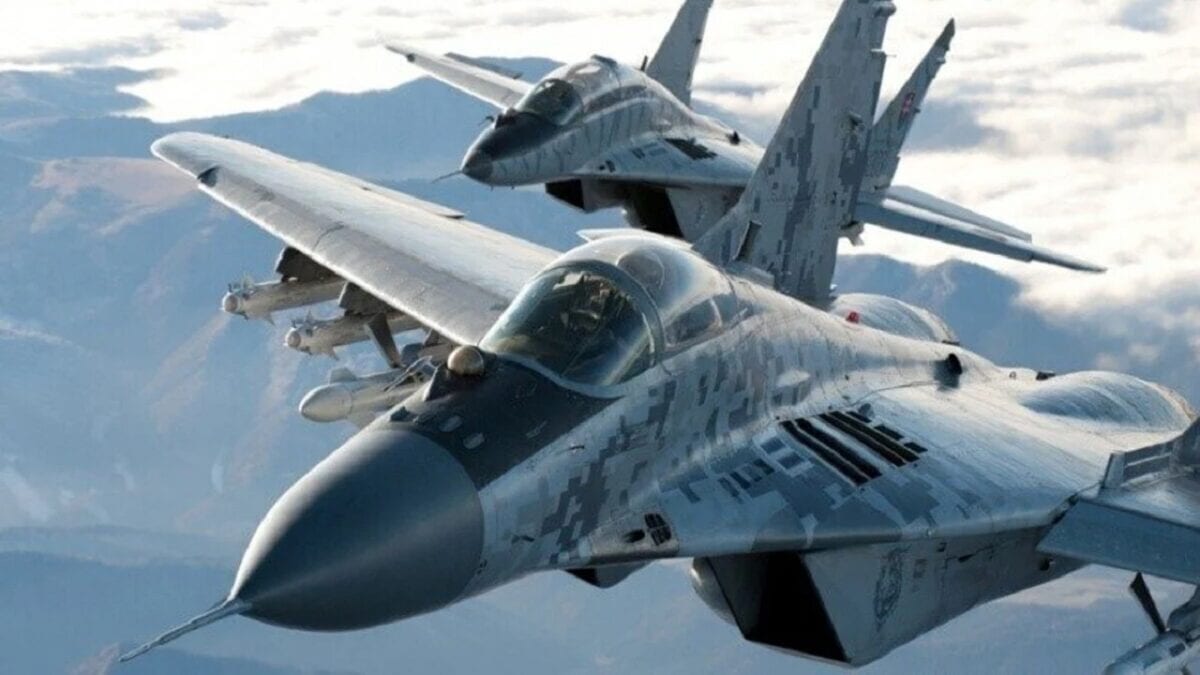The Ukrainian Air Force might soon be receiving MiG-29 Fulcrum fighter jets to help defend against the Russian invasion forces.
In the latest news of the “fighter jets for Ukraine” saga, Kyiv has received aircraft and spare parts from third countries in order to service its fighter and attack jet fleets.
Aircraft and Spare Parts
On Tuesday, in his daily brief to the press, Pentagon Press Secretary John F. Kirby acknowledged that the Ukrainian Air Force has received both aircraft and aircraft parts for its fleet.
“I would just say without getting into what other nations are providing that they have received additional platforms and parts to be able to increase their fleet size — their aircraft fleet size, I think I’d leave it at that. Platforms and parts,” the Pentagon press secretary said.
He went on to clarify that in this case, the platform is an airplane, stating that the Ukrainians “have received additional aircraft and aircraft parts to help them, you know, get more aircraft in the air.”
While he would not state if it was a MiG-29 or not, that seems like the most likely ‘platform’ to transfer.
The MiG-29 Debate, Explained:
To be sure, the MiG-29 debate isn’t new. The whole story began a couple of days after the Russian invasion began. On February 26, the European Union approved a first-of-its-kind security aid package to Ukraine worth $540 million. Then, on February 27, Josep Borrel, the EU’s high representative for foreign affairs and security, said that the bloc would be supplying Ukraine with “arms and even fighter jets.”
But then the EU retracted and said that it wouldn’t be sending fighter jets to Ukraine after all. However, when Ukrainian President Volodymyr Zelensky spoke to U.S. lawmakers in early March, he asked them to help with the transfer of aircraft from European countries to Ukraine.
Poland, which is the most eligible candidate to send fighter jets to Ukraine because of its 28 MiG-29s, has said that it is willing to transfer them to Ukraine. Slovakia, another candidate to send whole or parts of MiG-29s to Ukraine, was also favorable to the idea.
But the issue had stuck—until now, it seems.
The MiG-29 Option
The MiG-29 Fulcrum is an air-superiority fighter that can also conduct bombing missions. It can destroy aircraft by guiding air-to-air missiles using its radar and attack ground targets with unguided munitions but only in good visual conditions.
The aircraft has seven external hardpoints and can carry up to two R-27 air-to-air medium-range missiles; six R-73 and R-60 air-to-air short range missiles; four pods of S-5, S-8, S-24 unguided rockets; air bombs weighing up to 6600 pounds. It also has a 30mm gun with 150 rounds of ammunition.

MiG-29 fighter jet. Image Credit: Creative Commons.

MiG-29. Image Credit: Creative Commons.
Additional MiG-29s will give the Ukrainian Air Force added capabilities to conduct close air support and air superiority missions over the Donbas. To be sure, the Russian Aerospace Force is still the stronger player in this deadly equation, but the Ukrainian pilots and maintainers have proven to be a formidable opponent. Indeed, after 56 days of operations, the Russian military has still failed to achieve air superiority over Ukraine, according to the U.S. Department of Defense.
1945’s New Defense and National Security Columnist, Stavros Atlamazoglou is a seasoned defense journalist specializing in special operations, a Hellenic Army veteran (national service with the 575th Marine Battalion and Army HQ), and a Johns Hopkins University graduate. His work has been featured in Business Insider, Sandboxx, and SOFREP.

